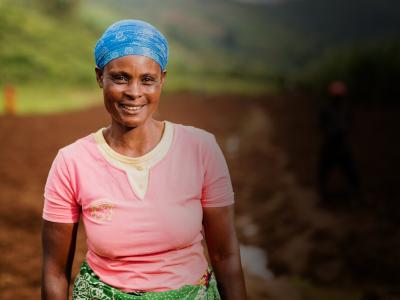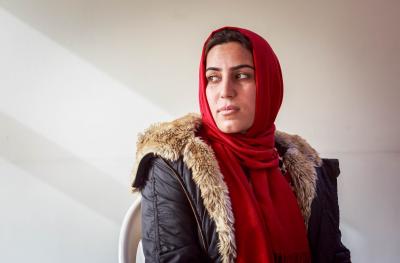A century ago, women in the United States secured the right to vote with the passing of the 19th Amendment. Halfway between then and now was the Women’s Strike for Equality, the historic second wave feminist strike advocating for equal opportunity in the workplace and education, free abortion, and free childcare. Women’s Equality Day commemorates these milestones in our national women’s history.
Yet as many have pointed out regarding the 19th Amendment and the second wave feminist movement, the right to vote was often denied to Black women, indigenous women, and many other women of color in practice. And the second wave feminist movement excluded the needs, voices, and accomplishments of women of color, working class women, and LGBTQ+ women.
The gap between the law on paper and actual practice persists in the U.S. and around the world. The COVID-19 pandemic has taken a catastrophic toll on our societies, exposing deep, pre-existing inequalities while stressing the need for an intersectional lens. Although the virus does not discriminate, we live in a world where systems of power and privilege create built-in protections for some groups, while others are made more vulnerable and less able to recover.
Gender is one of the major dividing lines, with women being hit hardest by the impacts of the pandemic. According to the Sustainable Development Goals Report 2020, an estimated 71 million people will be pushed into extreme poverty this year and most of them will be women. Domestic violence is expected to soar by an estimated 20% as a result of pandemic related restrictions, with 15 million additional cases predicted for every three months of lockdown. Experts are now warning that the virus could set back gender equality for decades.
Not all women are being affected equally. Nationally, communities of color weather higher risks when it comes to COVID-19, facing healthcare disparities, at the frontlines of essential work, and more.
Globally, women living in fragile and conflict-affected countries were already grappling with a deadly combination of extreme poverty, insecurity, and gender inequality. Many had been forcibly displaced from their homes, lost loved ones and livelihoods, and faced multiple traumas. For these women, a return to normal offers little hope for the future. ‘Normal’ is a vicious cycle of inequality which left them unseen, unheard, and unprotected when the virus hit.
But the pandemic has also shown us that radical change to the status quo is possible – and it can happen faster than we previously thought possible. Massive global disruption has forced governments, businesses and individuals to adapt and innovate rapidly. We are facing formidable challenges - but also a rare moment of opportunity to completely reimagine and rebuild our societies, from the foundations up.
It’s a daunting project -- but we are not starting from scratch. We already have an internationally agreed blueprint for constructing a more resilient, fair and sustainable world. In 2015, global leaders adopted the 2030 Sustainable Development Agenda, pledging to work together to achieve 17 Global Goals to end poverty, protect the planet, and ensure peace and prosperity for everyone by 2030. Gender equality is an integral part of the 2030 Agenda, cutting across all the goals and promising dramatic change in the lives of women affected by conflict and crisis.
The bold vision and transformative approach of the Global Goals are exactly what is needed to accelerate recovery from the pandemic and build back better. Before COVID-19, progress had been slow and uneven, particularly in post-conflict settings – but renewed solidarity, and a sense of urgency forged during this global crisis, have the potential to accelerate change.
Here are four key reasons why the Goals can provide a springboard for decisive action and impact at scale in a post-COVID world.
-
International solidarity and collaboration
The Global Goals have been unanimously adopted by all 193 UN Member States, providing a framework for international collaboration. The virus does not respect national borders, and gender inequality is a universal, structural problem affecting every sector and society on earth. Yet when crisis hits, our governments and mass media often react by turning inwards to focus on domestic issues. To counteract this trend, it is more important than ever to reiterate our shared responsibilities to each other and to future generations. The Goals affirm that we are all in this together and provide a vital tool to hold governments accountable for taking coordinated action for humanity.
-
Holistic approach
The Global Goals recognise that gender discrimination creates interlinked barriers for women across all areas of their lives. We have seen this play out all too clearly during the fallout from COVID-19, as women have been plunged into interconnected crises of health, income, food insecurity, violence, and social isolation. In order to respond effectively to the pandemic and build back better, we need to address these enmeshed problems in a systematic way. The standalone goal of achieving gender equality (Goal 5) is grounded in a holistic view of women’s empowerment. Furthermore, many targets falling under other themes – including those around poverty, health, education and climate change – recognize that progress on gender equality is integral to their delivery. The “interconnected and indivisible” nature of the 17 goals sets out the paradigm shift needed to deliver gender equality and build a resilient post-COVID future.
-
Inclusivity
The pandemic has underscored the truth that women are not a homogenous group – we have seen vast disparities between different women’s experiences in recent months. The 2030 Agenda for Sustainable Development is underpinned by the overarching principle of ‘Leave No One Behind’, which means that the entire set of Goals cannot be achieved unless they are realized for everyone, everywhere. This commits leaders and decision-makers to understanding the needs of vulnerable groups, such as women in fragile and conflict settings. This intersectional, transformative approach is essential in the context of COVID-19 responses. With inequality spiraling, and resources increasingly scarce during a global recession, we must ensure that recovery efforts prioritize the needs of women who are most at risk of being left behind.
-
Gender and Sustainable Development
During the COVID-19 crisis we have seen how women’s contributions and leadership have been critical to the survival of families, communities and economies. Women constitute 70% of the frontline health care workforce, as well as being the backbone of the agricultural sector and performing an average of 75% of the world’s total unpaid care and domestic work, including childcare, caring for the elderly, cooking, and cleaning. In their multiple roles, women will be a powerful engine behind a sustainable recovery from the current pandemic, and can help to safeguard our societies against future crises. The Goals’ cross-cutting agenda of empowering women recognizes and capitalizes on their potential as agents of change, who can accelerate progress in other areas. By using the Global Goals as a platform to overhaul restrictive gender norms and improve women’s opportunities and outcomes, we can create a radically reformed post-COVID system, which protects and benefits everyone.

